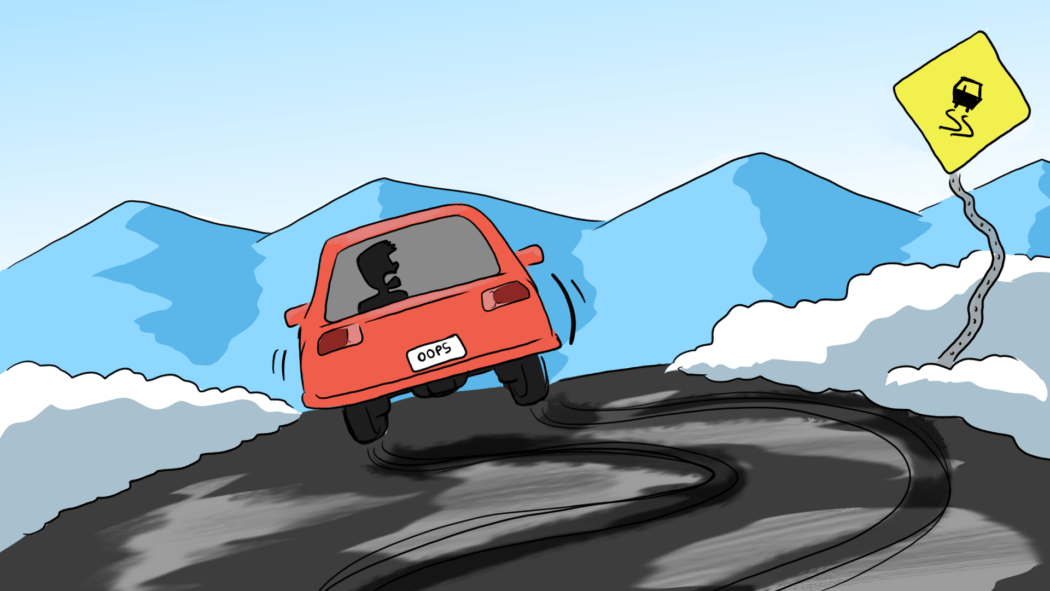Opinion: Winter weather safety in Logan is understated
Utah State University has little to offer for weather safety resources. Given that Utah is ranked sixth among the worst states to drive in and Salt Lake City being eighth for worst city, the roads in Utah are unsafe to say the least.
USU has students from all different parts of the country and the world. States such as Florida and most of Texas have no snowfall and their driver’s education classes do not teach how to safety drive on ice. USU should provide educational resources for students to accommodate students’ changes in their environments.
Victoria Mendoza, a sophomore studying aviation, had no assistance in the transition from Texas driving to Utah driving. She was recently in a car accident in Sardine Canyon resulting in multiple broken ribs.
Her first experience with driving in Utah snow was frightful to say the least.
“Worst snow-related thing that happened was me and a friend were going up through Sardine Canyon last November and the rain turned to snow,” Mendoza said. “We got stuck in the snow and it was a horrible feeling. No plows had gone through, cars were bumper to bumper and many were stuck off on the side of the road. We only got out because of highway patrol helping to push the car. It was frightening.”
She’s had her vehicle since living in Texas and it was not meant for the conditions of Logan. The best types of cars for driving in the snow have four- or all-wheel drive, anti-lock brakes, and studless winter tires, according to Outside magazine.
USU does issue campus alerts when there are safety concerns from weather, but that is only in severe cases. Snow- and ice-covered rows are a constant concern in Logan during this time of year. The university can remedy the unsafe conditions in Logan by providing resources for Utah driving workshops for incoming freshmen. Students can be informed about said workshops during connection classes.
There are laws unique to Utah that should also be taught to incoming students. For instance, Utah law requires drivers to clear snow from their windows before driving. Neglecting to do so will result in a ticket.
Similarly, in light of what occurred this past December with the Kentucky tornadoes, natural disasters are no laughing matter and should not be taken lightly. The tornados had resulted in dozens killed and homes in ruins. Tornadoes do not occur in states such as Utah, but Utah has its own forms of natural disasters.
Earthquakes and snow squalls are some primary ones in this state. Snow squalls are typically confused with blizzards but are far more common and can be more dangerous. They result in an intense, short period of heavy snowfall and rapid temperature drops. On Dec. 27, a squall hit Salt Lake City, causing 75 crashes in a five-hour time period according to Utah Highway Patrol.
When asking fellow students if they had heard of a snow squall, the answer I received was almost unanimously no. For something so dangerous and prominent in our state, students should be warned about squalls as well as different types of natural disasters and informed on safety protocol and measures.
A student from the lower East Coast doesn’t know what to do in the event of a blizzard but they know the precautionary steps to take in the event of a hurricane. Coming to Utah, which has a very different climate than South Carolina, is a culture and weather shock. Accommodations should be made to help students adjust.
For the safety of all Aggies, USU should have more resources on weather safety and winter driving.
—
Sara Prettyman is a Maryland-born-and-raised sophomore majoring in applied mathematics. She loves drawing, running and reading.
— A02342348@usu.edu

